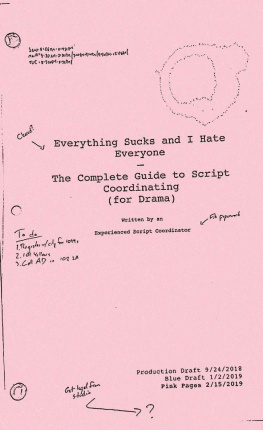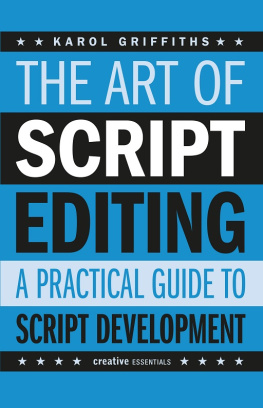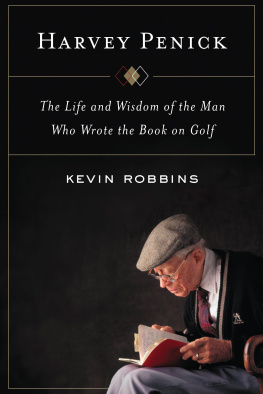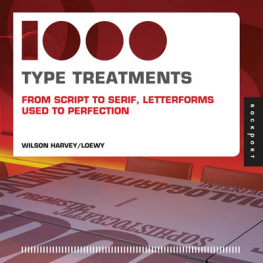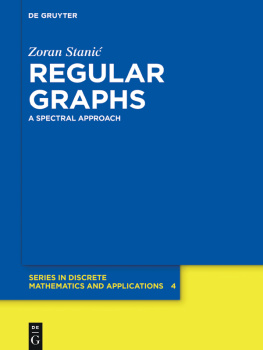Harvey Dam - Regular Script Graphemics
Here you can read online Harvey Dam - Regular Script Graphemics full text of the book (entire story) in english for free. Download pdf and epub, get meaning, cover and reviews about this ebook. year: 2008, publisher: Harvey Dam, genre: Home and family. Description of the work, (preface) as well as reviews are available. Best literature library LitArk.com created for fans of good reading and offers a wide selection of genres:
Romance novel
Science fiction
Adventure
Detective
Science
History
Home and family
Prose
Art
Politics
Computer
Non-fiction
Religion
Business
Children
Humor
Choose a favorite category and find really read worthwhile books. Enjoy immersion in the world of imagination, feel the emotions of the characters or learn something new for yourself, make an fascinating discovery.

- Book:Regular Script Graphemics
- Author:
- Publisher:Harvey Dam
- Genre:
- Year:2008
- Rating:5 / 5
- Favourites:Add to favourites
- Your mark:
- 100
- 1
- 2
- 3
- 4
- 5
Regular Script Graphemics: summary, description and annotation
We offer to read an annotation, description, summary or preface (depends on what the author of the book "Regular Script Graphemics" wrote himself). If you haven't found the necessary information about the book — write in the comments, we will try to find it.
Regular Script Graphemics — read online for free the complete book (whole text) full work
Below is the text of the book, divided by pages. System saving the place of the last page read, allows you to conveniently read the book "Regular Script Graphemics" online for free, without having to search again every time where you left off. Put a bookmark, and you can go to the page where you finished reading at any time.
Font size:
Interval:
Bookmark:
Chinese characters usually refer to Han characters ( hnz ), the written symbols usually used to write Han languages. This Han refers to the Han ethnicity, the ethnic majority in Greater China. Mandarin is the most popular Han language. Han languages are popularly referred to as Chinese languages, although there are non-Han Chinese languages such as Manchu and Khitan. This book will refer to Han characters as Chinese characters.
Chinese characters represent morphosyllables , and a set of them used to write a language is a morphosyllabary. That means each character represents a syllable in a Chinese language, and usually a morpheme (a meaningful unit of language). The vast majority of Chinese morphemes are one syllable long, but a few are longer.
Chinese characters are currently used in the Chinese, Japanese, and Korean writing systems, along with punctuation, and occasionally Latin letters, Arabic numerals, and other characters in special contexts. Japanese also employs two syllabaries (sets of symbols that represent syllables) called hiragana and katakana. Korean usually uses an alphabet called Hangul, and uses Chinese characters in limited contexts. When Chinese characters are used in Japanese or Korean, they often behave like logograms (characters that represent words), in which case calling them a logography is appropriate. Chinese characters were used in Vietnamese in the past but are no longer used, as Vietnamese is currently written in Latin letters.
In this book, pronunciations of Chinese terms are given in Hanyu Pinyin , a system of spelling Mandarin sounds using Latin characters, unless otherwise noted.
Regular script ( kish ) is a Chinese script, a way of writing Chinese characters. Its the script used most often in Chinese text environments, and its the first (and often only) Chinese script taught in schools. Graphemics is the the study of basic script components, which in Chinese scripts are characters. In this book, Ill describe regular script features and their execution. Ill also give you suggestions and exercises to help you write it well.
You dont need a brush, but because regular script developed in an environment where everybody wrote with brushes, its most naturally described assuming a brush is used. Throughout this book, Ill be using the term brush, but substitute in pencil, finger, or whatever writing instrument you choose to use.
But wait, you say. Arent you going to teach me calligraphy? Well, if you think calligraphy is pretty (calli-) writing (-graphy) then thats not up to us, is it? Whether writing is pretty is up to whoevers looking at it. If you want to write in a way that pleases the most people the most, then I might have a few recommendations, because correctly written regular script happens to please many people, but Im primarily concerned with describing regular script as it is.
I will introduce features of regular script using cases of example characters to keep them memorable and in their natural context. Throughout the approximately fifty cases shown in this book, features and concepts will be introduced and revisited.
(Im getting reports that some characters in this book dont display correctly on some devices. Sorry about that. Ive circumlocuted around or substituted look-alikes for most of them. Seeing the remaining problem characters is not necessary for understanding the points made where they appear.)
Here Ill describe the hardware on which regular script developed and how they may be used. While relevant, the tools used to produce regular script do not make the difference between correct and incorrect writing. Traditional tools are only traditional because they were accessible, convenient to use, and produced acceptable script. Remember, you can write correctly with your finger on a touchscreen.
But lets say you want to write with a brush ( b ). Dont make too big of a deal out of choosing one. Just choose one that works and is big enough. A brush works if you dip it in water or ink, drag the tip across a surface, lift it off the surface, and the tip returns to a point. A brush is big enough if you can hold the handle upright and make the widest stroke you want to write without the edges of the stroke getting rough and without moving excessively slowly. When in doubt, pick a bigger brush, because you can write thin strokes with a big brush, but you cant write thick strokes with a small brush. As for the tip material, Ive gotten good results from brushes that have a mix of goat and weasel hair, but whatever bristle-like material should be sufficient. A more important factor is how familiar you are with the brush youre using. After youve calibrated yourself to your brush, all brushes are about the same.
As for how to hold a brush, you can start with one of these two grips:


I use the grip on the left when my elbow is close to my writing surface, which is most of the time. Sometimes I use the grip on the right when my writing surface is far below my elbow (like if Im standing up and writing something huge). Notice the different wrist angle. Consider these only as starting points. If you find that some other grip allows you to write more easily, you should change your grip.
As for ink, use anything you want. Traditionally, liquid ink is made by grinding an inkstick ( m ) on the wet surface of an inkstone ( yn ). Inksticks are sticks of soot, glue, and some other ingredients. Inkstones are usually pieces of tuff (consolidated volcanic ash) with a flat surface to grind ink on and a well to hold excess liquid. The ground ink particles mix with water and form liquid ink. You can also buy bottles of liquid ink and dilute it with water if necessary.
That leaves paper ( zh ). Again, use whatever you want. Xuan paper ( xun zh ) is the traditional medium. Untreated Xuan paper is highly absorbent, which causes ink marks to bleed, rounding corners. It can be treated with potassium alum to decrease absorbency, but also durability, to varying degrees.
If a document is to be preserved, it could be mounted on silk as a scroll . Wide scrolls for reading on a table are called ( shujun ) and tall scrolls for hanging on walls are called ( lzhu ). For more permanent preservation, the document may be glued on a stone slab to serve as a template for carving into steles ( bi ), inscribed stones. If one wanted to produce a stele from the beginning, one could write directly on the stone slab. Paper copies can then be made by inking the stele and pressing paper against it, producing a copy with black and white inverted.
The most basic unit in a regular script character is a stroke , a mark made using a writing instrument. The character consists of a single horizontal stroke.
Most people are right-handed, and regular script evolved to be written with a brush. Also, people are lazy. Given the option of doing one thing or another, all else being equal, people will choose to do the easier thing. Therefore, while there may be stroke shapes that are arguably more legible (or otherwise desirable) than handwritten regular script strokes, right-handed people wielding brushes will only be willing to make certain approximations of them. This causes regular script strokes to exhibit certain characteristics.
Given these real-world forces, how do you think a horizontal stroke would be approximated?
Heres one way:

Font size:
Interval:
Bookmark:
Similar books «Regular Script Graphemics»
Look at similar books to Regular Script Graphemics. We have selected literature similar in name and meaning in the hope of providing readers with more options to find new, interesting, not yet read works.
Discussion, reviews of the book Regular Script Graphemics and just readers' own opinions. Leave your comments, write what you think about the work, its meaning or the main characters. Specify what exactly you liked and what you didn't like, and why you think so.





